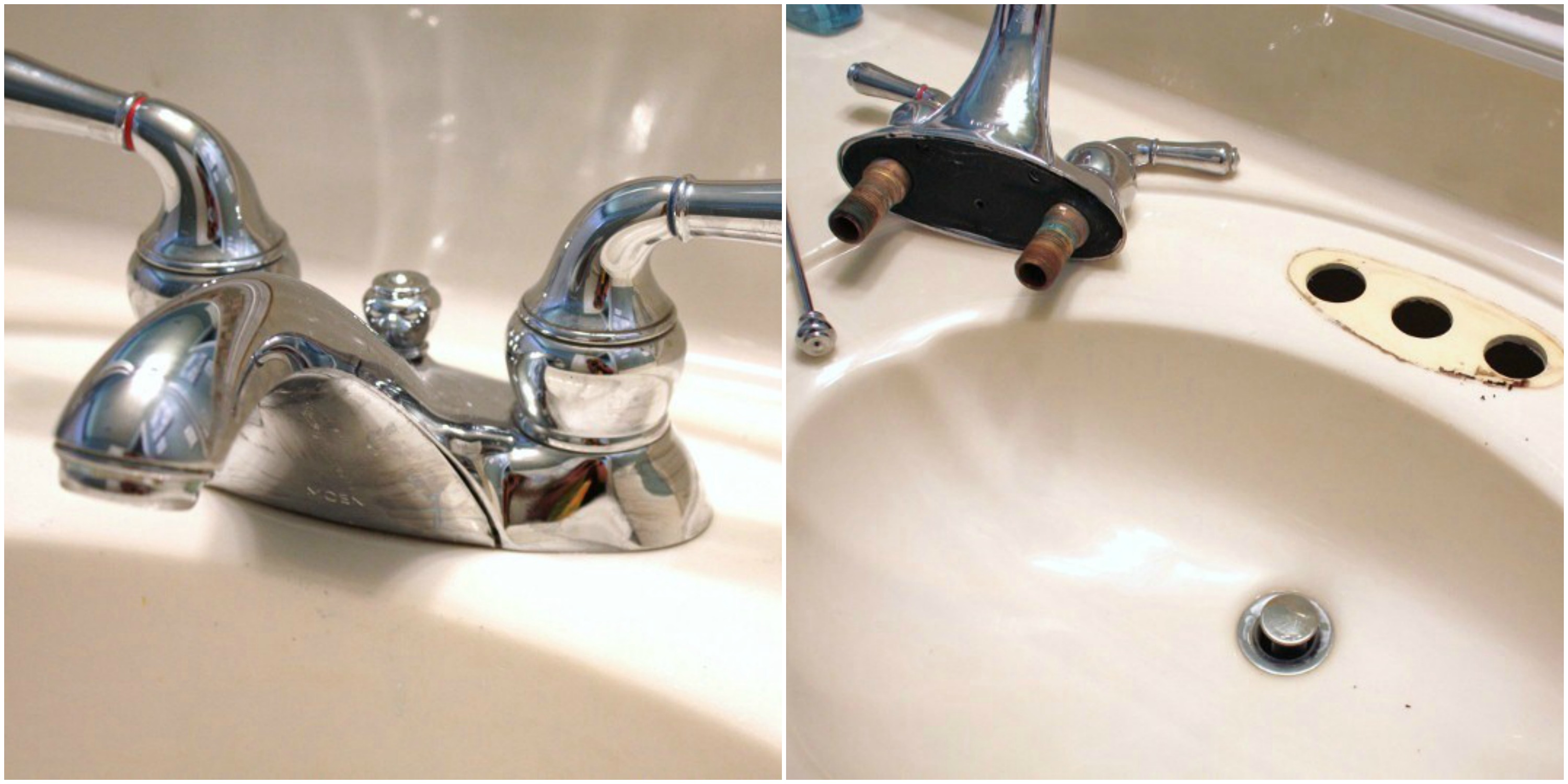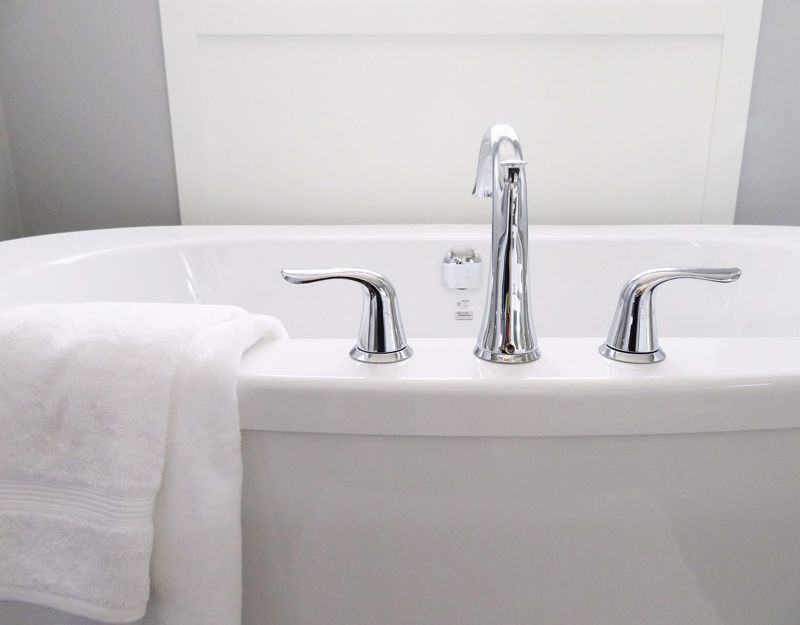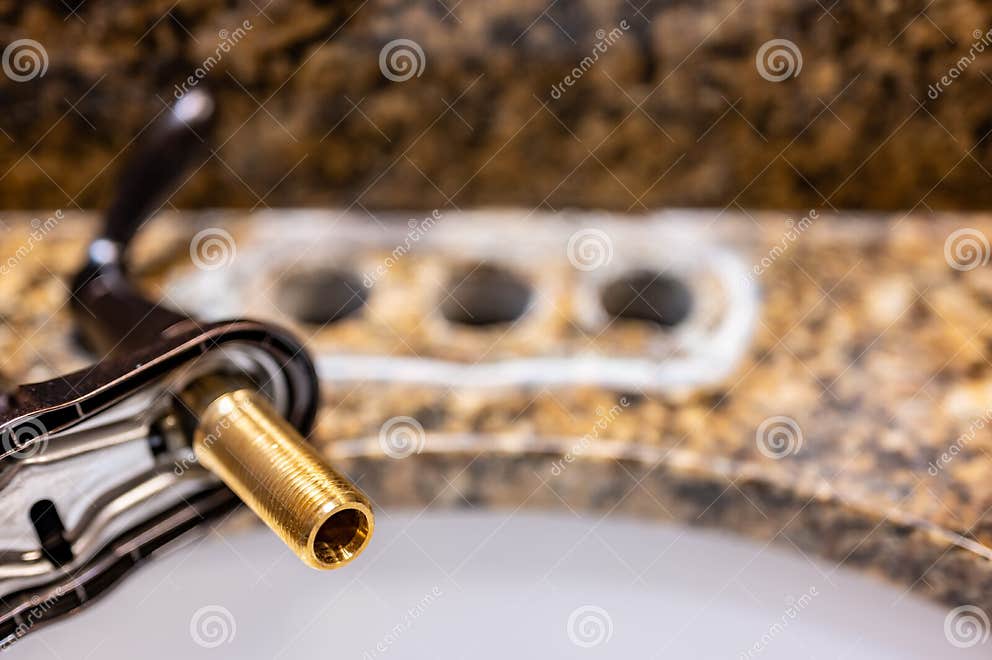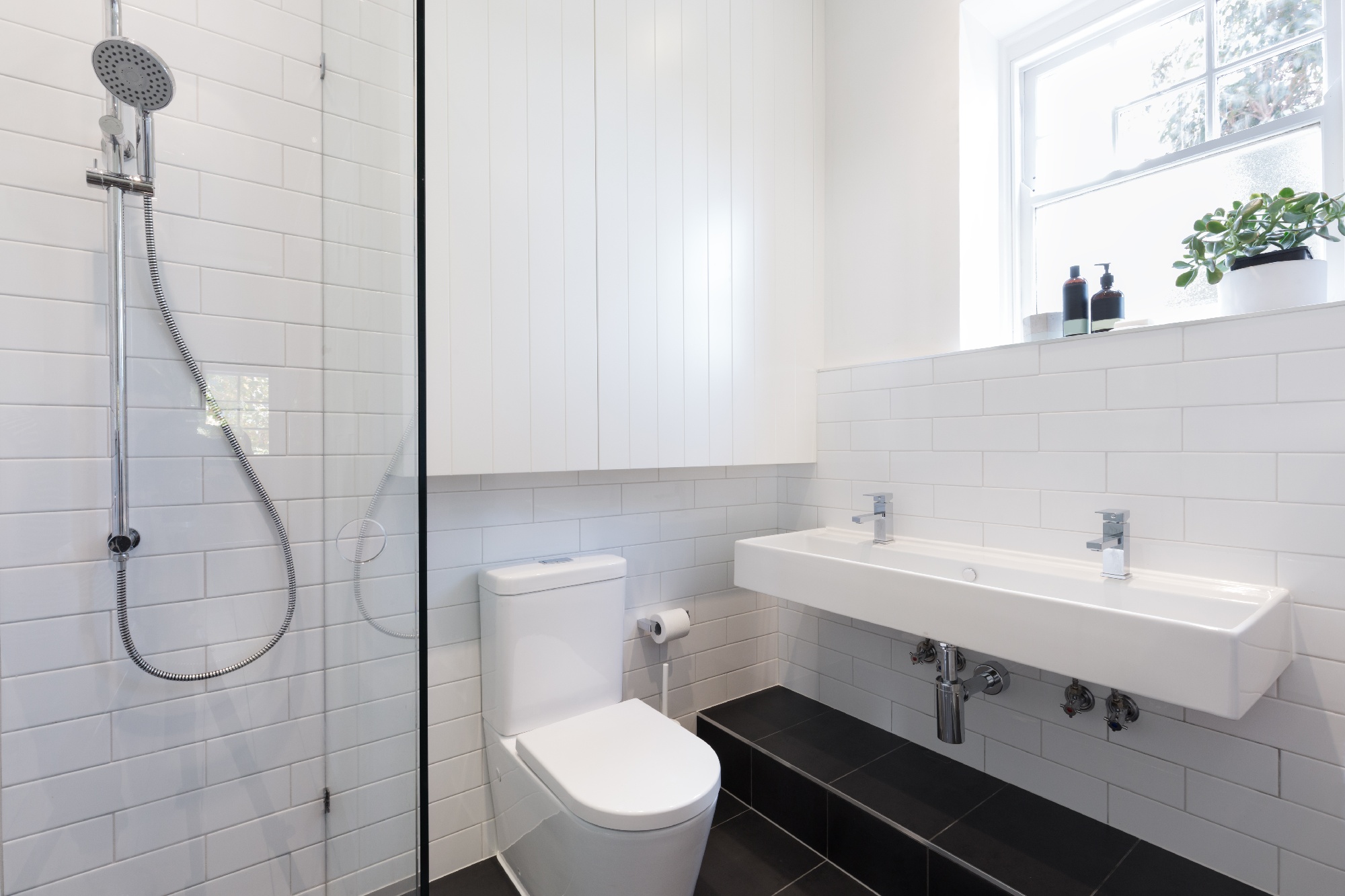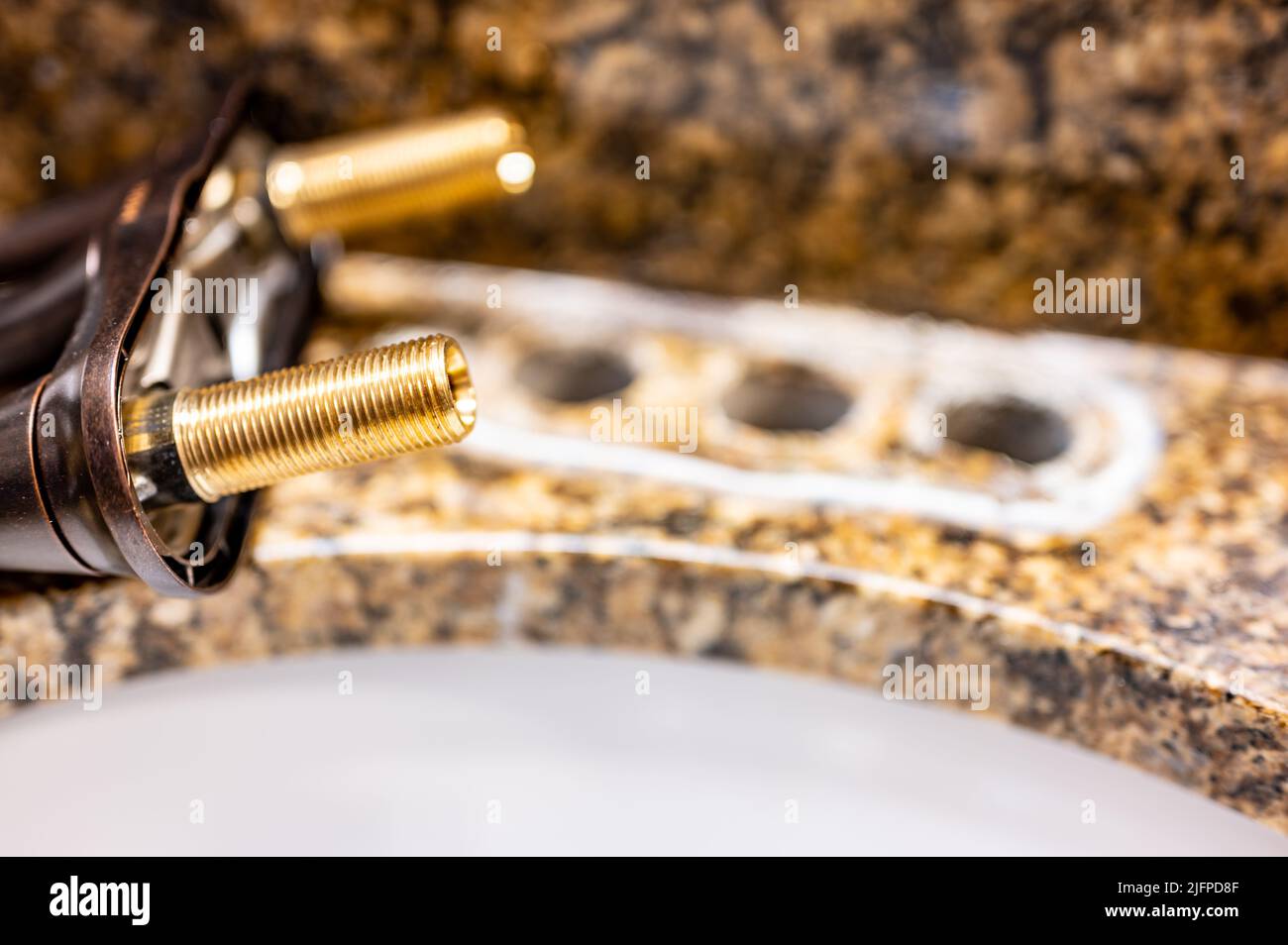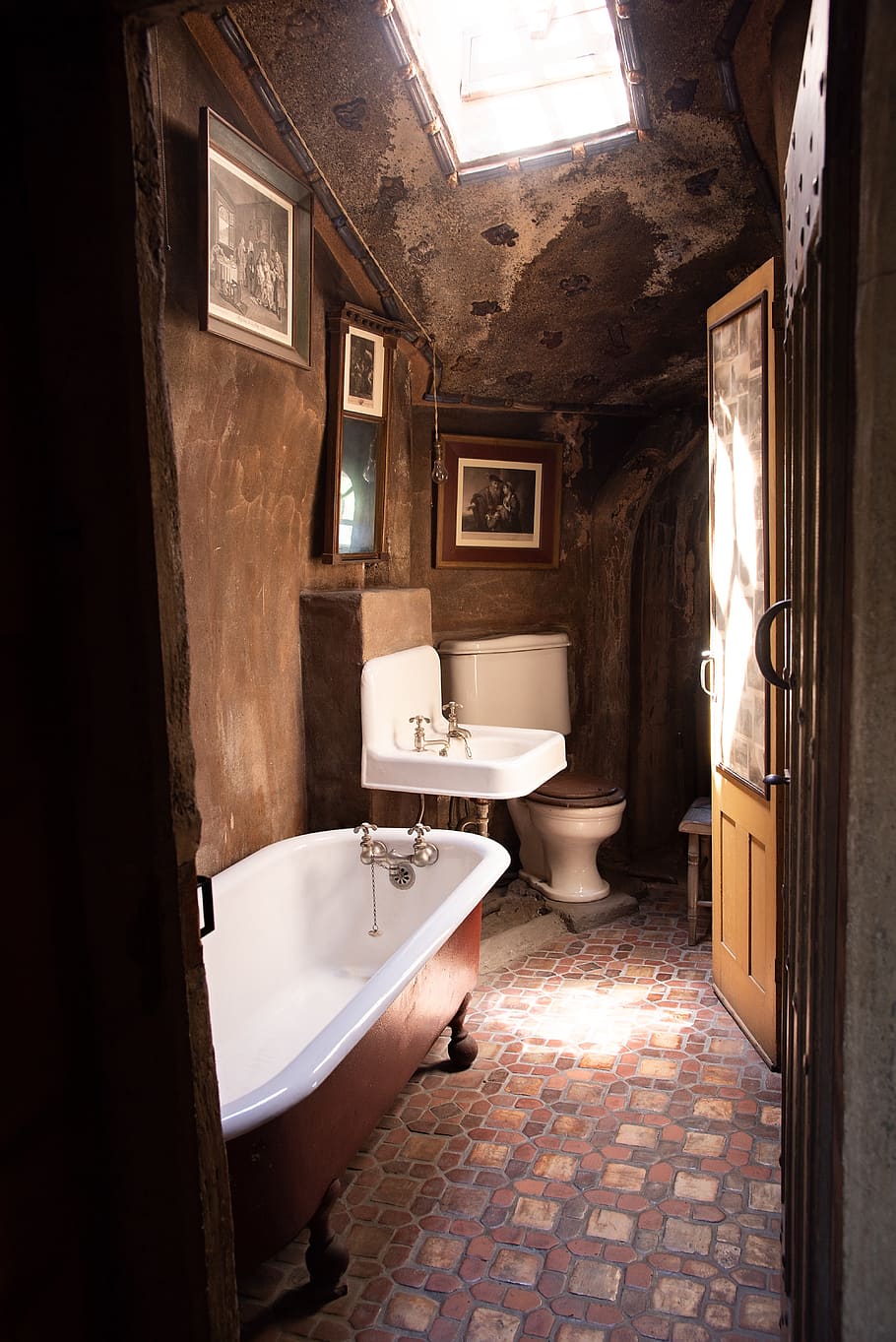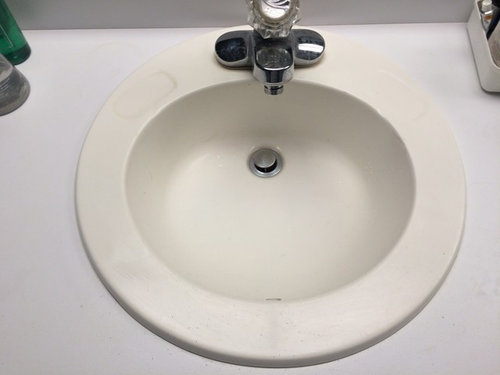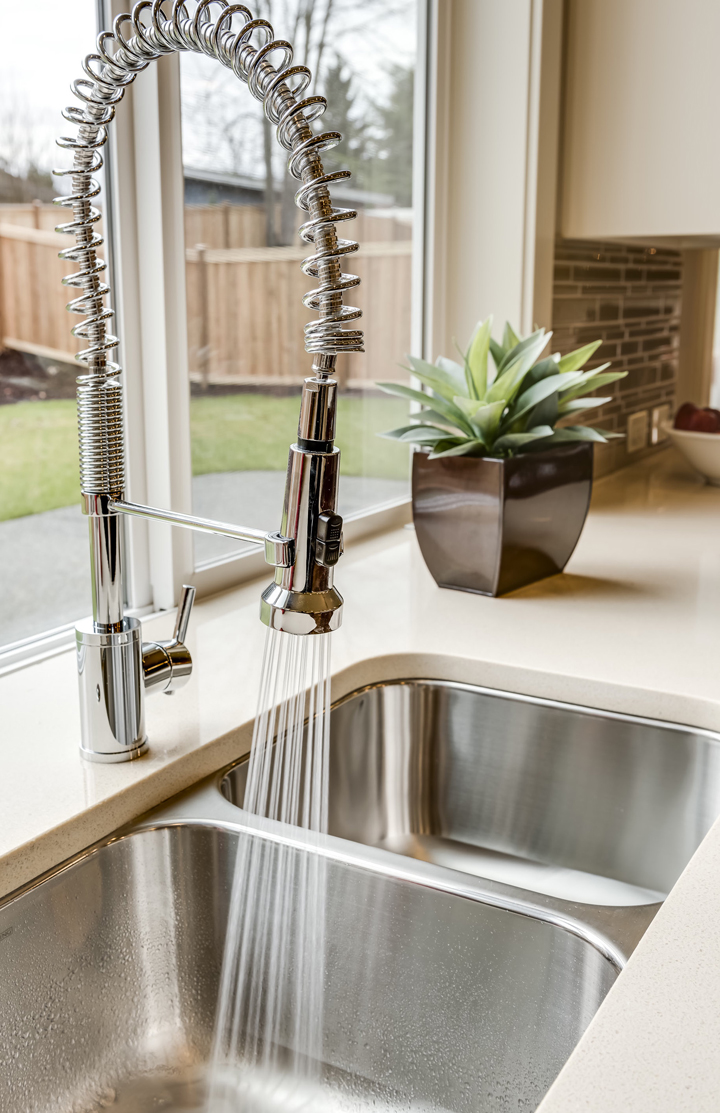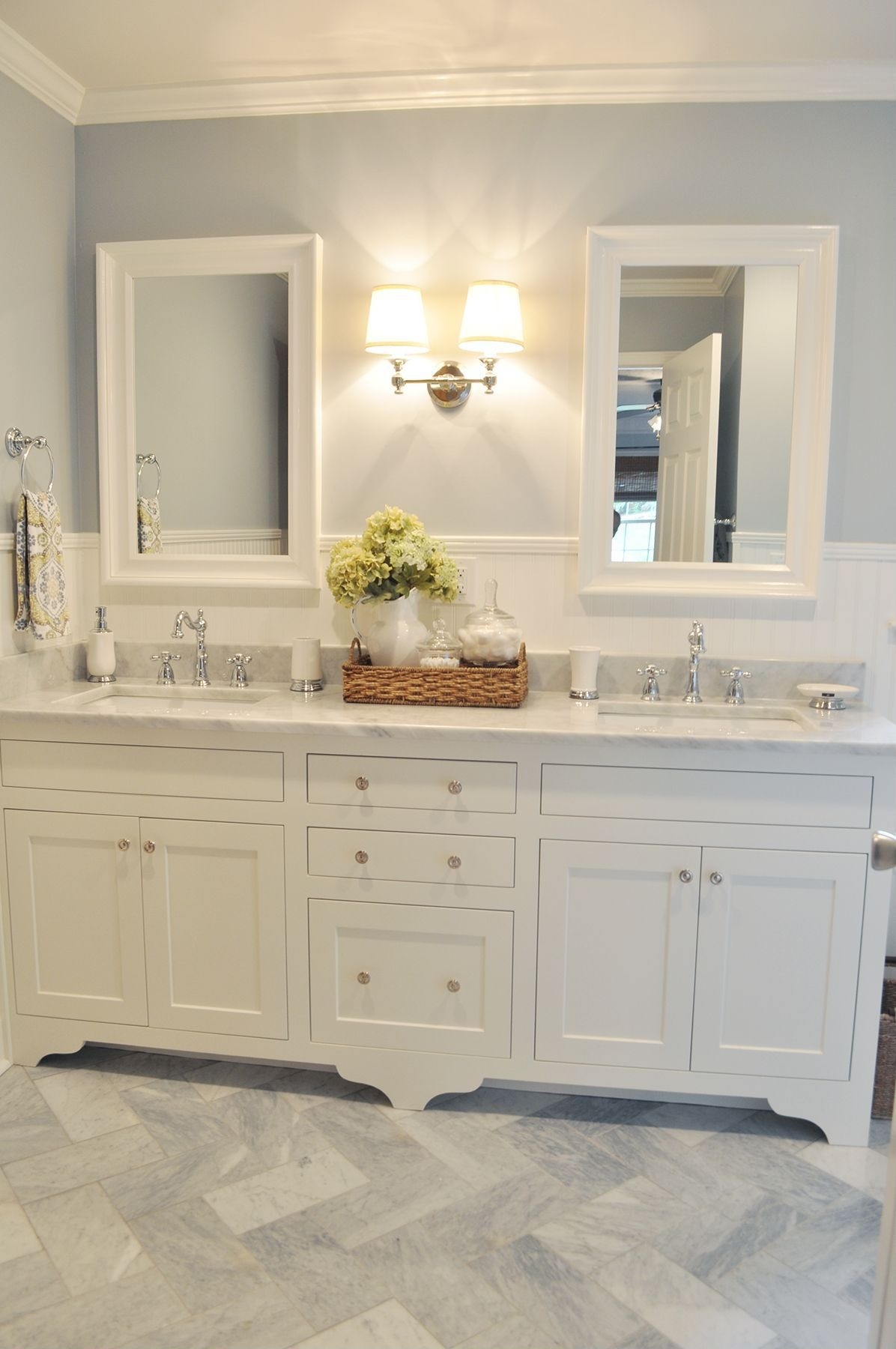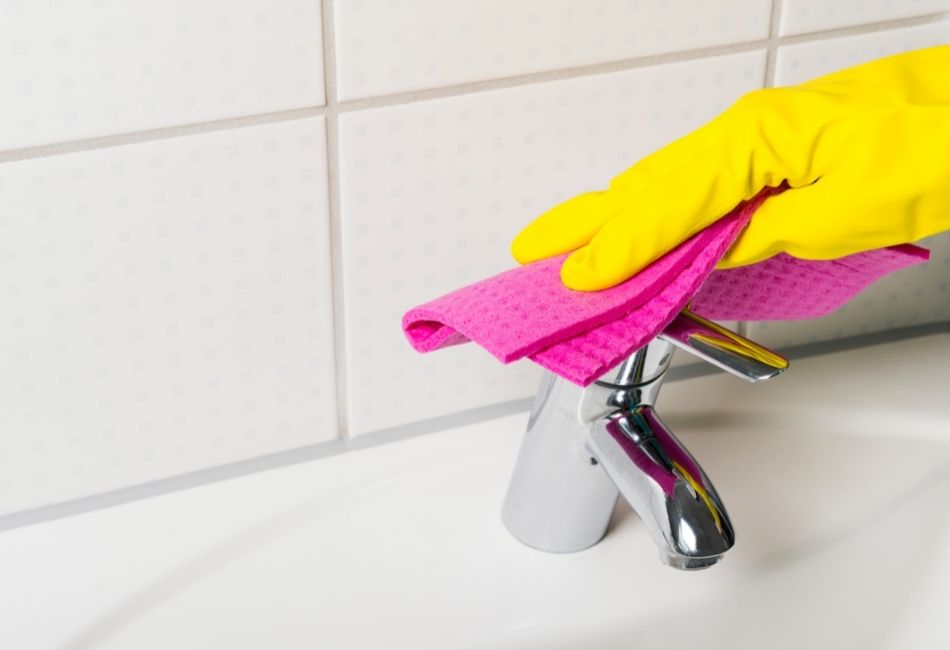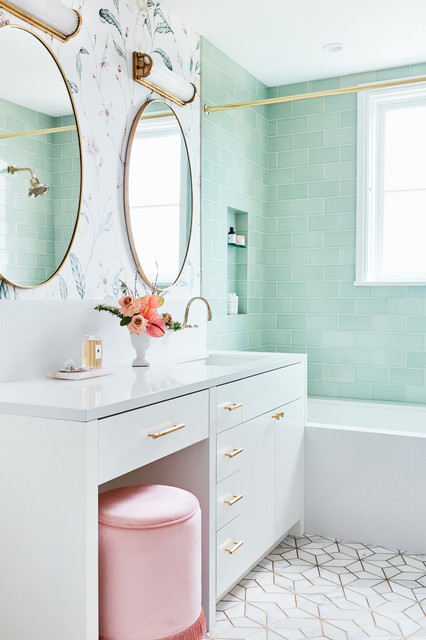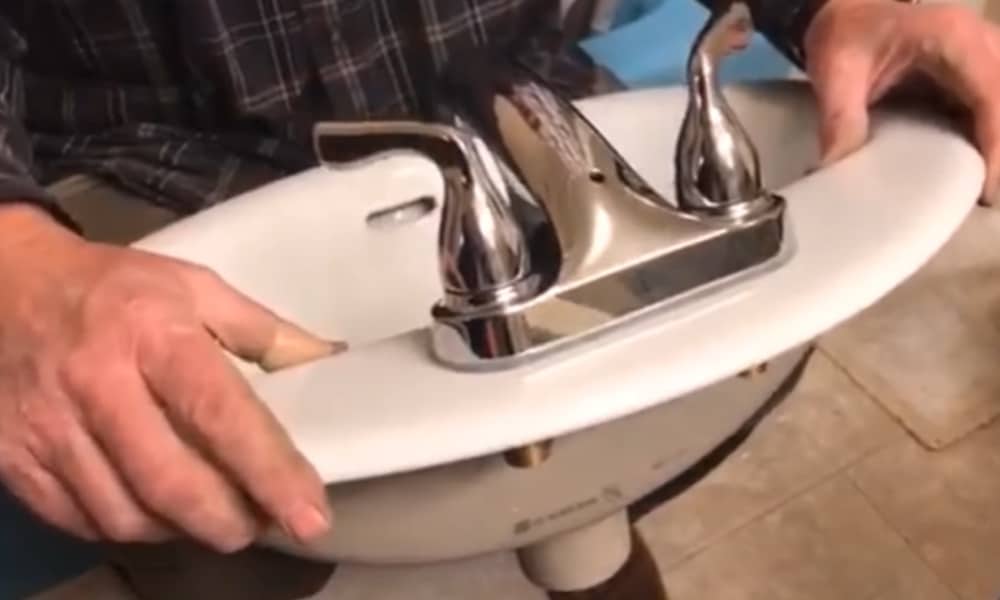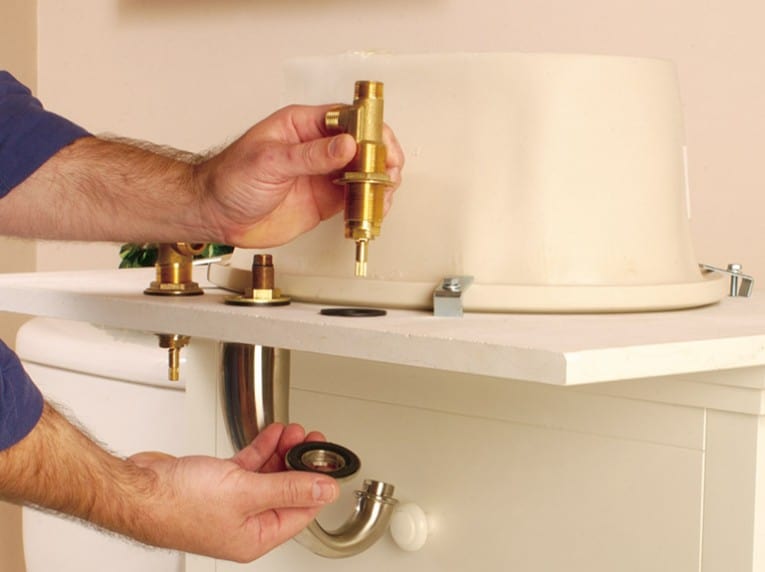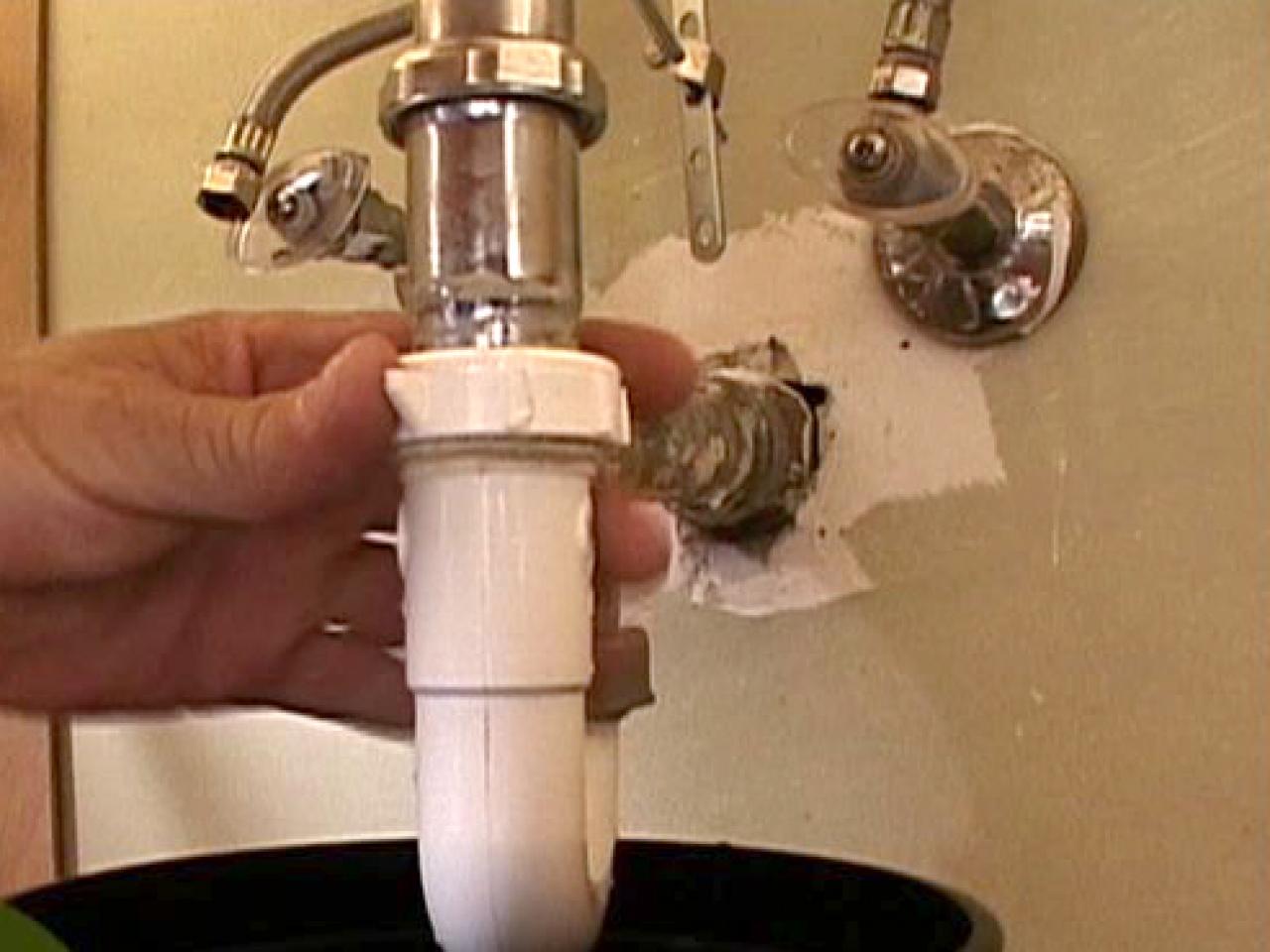If you're tired of that leaky, outdated bathroom sink faucet, it's time for a replacement. Not only can a new faucet improve the look of your bathroom, but it can also save you money on water bills. Here's a step-by-step guide on how to replace bathroom sink faucets and upgrade your bathroom in just a few simple steps.How to Replace Bathroom Sink Faucets
Step 1: Turn off the water supply. Before beginning any work, make sure to turn off the water supply to your sink. This can usually be done by turning off the shut-off valves located under the sink. Step 2: Remove the old faucet. Remove the nuts and bolts that hold the old faucet in place using a wrench. You may need to use a basin wrench to reach tight spaces. Once the nuts and bolts are removed, lift the old faucet out of the sink. Step 3: Clean the area. Before installing the new faucet, clean the area around the sink to remove any residue or build-up from the old faucet. This will ensure a clean surface for the new faucet to be installed on. Step 4: Install the new faucet. Place the new faucet into the holes on the sink and use the nuts and bolts provided to secure it in place. Make sure it is tightly secured and level. Step 5: Connect the water supply lines. Attach the water supply lines to the new faucet. Make sure to use plumber's tape to prevent any leaks. Step 6: Turn on the water supply. Once everything is securely connected, turn the water supply back on and test the new faucet for any leaks. Step 7: Enjoy your new faucet! Your new bathroom sink faucet is now installed and ready to use. Admire the new look and enjoy the improved functionality.Replacing Bathroom Sink Faucets: A Step-by-Step Guide
Replacing bathroom sink faucets can be a DIY project, but it's important to have the right tools and skills. If you're not confident in your abilities, it's best to hire a professional plumber to ensure the job is done correctly. However, if you're up for the challenge, here are some tips and tricks to make the process smoother: - Take pictures of the old faucet before removing it to use as a reference when installing the new one. - Lay down a towel or blanket on the floor to catch any water that may drip during the installation process. - Use a flashlight to get a better view of the area under the sink. - Follow the manufacturer's instructions for installation and use the correct tools.DIY Bathroom Sink Faucet Replacement
- When choosing a new faucet, consider the style, finish, and functionality that will best suit your bathroom. - Look for water-saving features, such as aerators, to help reduce water usage and save money on bills. - If your new faucet requires a different number of holes than your sink has, use a deck plate or cover to hide the extra holes. - Consider hiring a professional if you encounter any issues during the installation process.Replacing Bathroom Sink Faucets: Tips and Tricks
Replacing your bathroom sink faucet is a simple and affordable way to upgrade the look and functionality of your bathroom. With a variety of styles and finishes to choose from, you can easily find a faucet that fits your personal style and complements your bathroom decor. Don't be afraid to get creative and add a touch of luxury with a high-end faucet or choose a unique design to make a statement in your bathroom.Upgrade Your Bathroom with New Sink Faucets
Old bathroom sink faucets can not only be an eyesore, but they can also cause higher water bills due to leaks and inefficiency. Here are some signs that it's time to replace your old faucet: - It's constantly leaking, no matter how many times you try to fix it. - It has visible rust or corrosion. - It has low water pressure or inconsistent temperature. - It's outdated and doesn't match the rest of your bathroom's style.Replacing Old Bathroom Sink Faucets: What You Need to Know
When selecting a new bathroom sink faucet, it's important to consider both style and functionality. Here are some factors to keep in mind: - The type of sink you have (undermount, drop-in, vessel, etc.) will determine the type of faucet you need. - The number of holes on your sink will determine the type of faucet you can install. - The finish of the faucet should complement the other fixtures in your bathroom. - Consider the height and reach of the faucet to ensure it will fit and function properly in your sink.Choosing the Right Replacement Faucet for Your Bathroom Sink
While replacing a bathroom sink faucet may seem like a straightforward process, there are some common mistakes that can be made: - Not turning off the water supply before beginning work. - Not following the manufacturer's instructions. - Using the wrong tools or not using plumber's tape. - Installing the faucet too tightly, which can cause leaks or damage. To avoid these mistakes, take your time and carefully follow the steps outlined in the installation instructions.Replacing Bathroom Sink Faucets: Common Mistakes to Avoid
If you're ready to give your bathroom a fresh look with a new sink faucet, follow these simple steps to install it: Step 1: Gather your tools and materials, including a new faucet, plumber's tape, and a wrench. Step 2: Turn off the water supply to your sink. Step 3: Remove the old faucet by following the steps outlined in the manufacturer's instructions. Step 4: Clean the area and install the new faucet, making sure it is tightly secured and level. Step 5: Connect the water supply lines and turn the water supply back on. Step 6: Test the new faucet for any leaks. Step 7: Enjoy your new and improved bathroom sink faucet!How to Install New Bathroom Sink Faucets
To successfully replace your bathroom sink faucet, you'll need the following tools and materials: - A new faucet - Plumber's tape - A wrench - A basin wrench (if needed) - Towels or a blanket - A flashlight - A bucket or container to catch water - Cleaning supplies Now that you have all the information you need, it's time to get started on replacing your bathroom sink faucet. With the right tools and a little bit of patience, you can give your bathroom a simple yet impactful upgrade that will improve both its appearance and functionality.Replacing Bathroom Sink Faucets: Tools and Materials You'll Need
Why Upgrade Your Bathroom Sink Faucets?

Enhance the Aesthetics of Your Bathroom
 Upgrading your bathroom sink faucets can instantly add a touch of elegance and sophistication to your bathroom. With a variety of designs and finishes available, you can choose a
modern
,
contemporary
, or
traditional
style that best fits your overall house design. For a cohesive look, you can even match your new faucets with other bathroom fixtures such as towel bars and showerheads. With the right
color
and
style
, your bathroom sink faucets can become a focal point in your bathroom, elevating the overall design and creating a more
luxurious
space.
Upgrading your bathroom sink faucets can instantly add a touch of elegance and sophistication to your bathroom. With a variety of designs and finishes available, you can choose a
modern
,
contemporary
, or
traditional
style that best fits your overall house design. For a cohesive look, you can even match your new faucets with other bathroom fixtures such as towel bars and showerheads. With the right
color
and
style
, your bathroom sink faucets can become a focal point in your bathroom, elevating the overall design and creating a more
luxurious
space.
Improve Functionality and Efficiency
Enhance Hygiene and Safety
 Bathroom sink faucets are one of the most frequently used fixtures in the house, and over time, they can accumulate dirt, grime, and bacteria. This can not only affect the aesthetics of your bathroom but also pose a risk to your health. Upgrading to newer faucets with
touchless
or
sensor
technology can eliminate the need to touch the handles, reducing the spread of germs and promoting better hygiene. Furthermore, newer faucets also come with
anti-scald
features, preventing accidental burns and making your bathroom safer for everyone.
Bathroom sink faucets are one of the most frequently used fixtures in the house, and over time, they can accumulate dirt, grime, and bacteria. This can not only affect the aesthetics of your bathroom but also pose a risk to your health. Upgrading to newer faucets with
touchless
or
sensor
technology can eliminate the need to touch the handles, reducing the spread of germs and promoting better hygiene. Furthermore, newer faucets also come with
anti-scald
features, preventing accidental burns and making your bathroom safer for everyone.
Conclusion
 Upgrading your bathroom sink faucets may seem like a small change, but it can have a significant impact on the overall design, functionality, and safety of your bathroom. With a wide range of options available, you can find the perfect faucets that not only fit your personal style but also improve the efficiency and hygiene of your bathroom. So why wait?
Replace
your old faucets today and transform your bathroom into a more beautiful and functional space.
Upgrading your bathroom sink faucets may seem like a small change, but it can have a significant impact on the overall design, functionality, and safety of your bathroom. With a wide range of options available, you can find the perfect faucets that not only fit your personal style but also improve the efficiency and hygiene of your bathroom. So why wait?
Replace
your old faucets today and transform your bathroom into a more beautiful and functional space.




